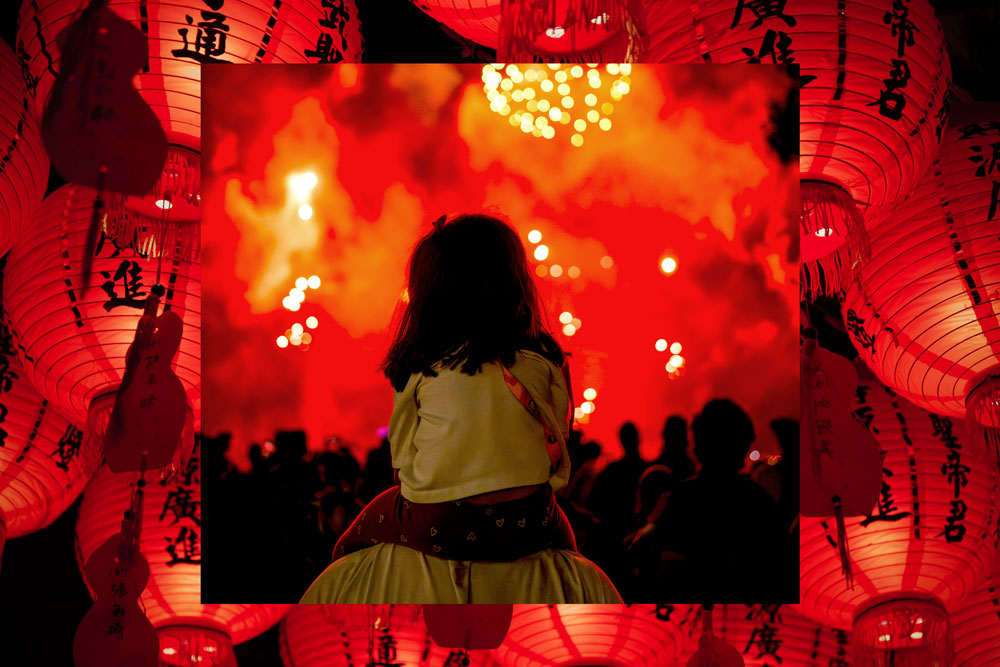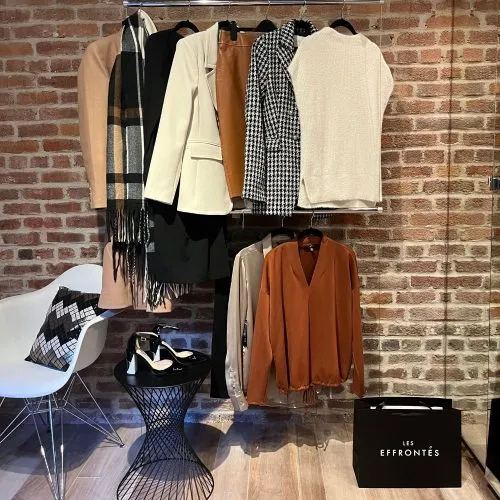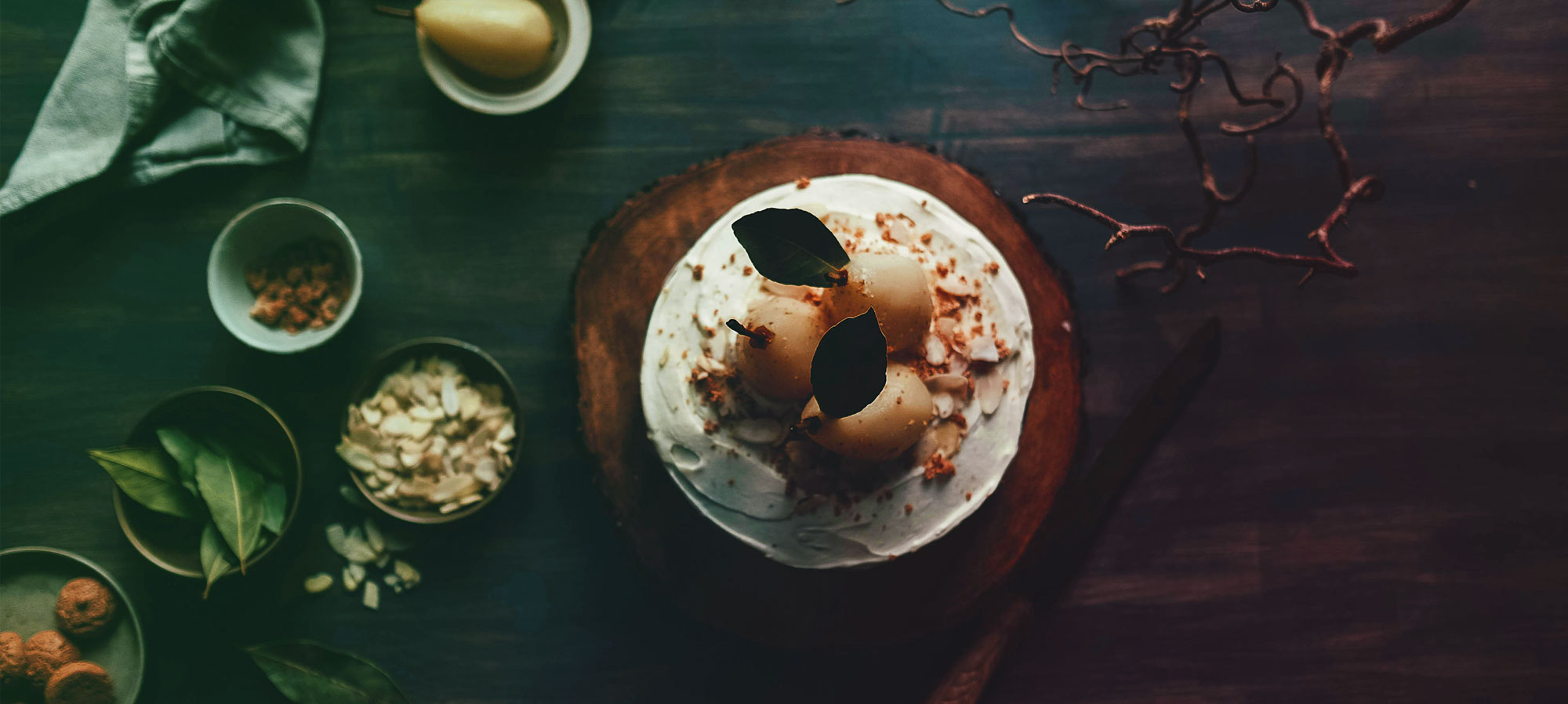
This year, the Lunar New Year begins on February 10, 2024. On this day of festivities, families will come together to savour lucky foods, celebrate and exchange hóngbāo, those magnificent red envelopes symbolizing good luck and prosperity.
As this celebration steeped in colour and tradition approaches, discover the legends and customs that have shaped this festival over the centuries.
NIANSHOU
According to legend, a small village nestled in the heart of the mountains once lived in terror of the Nian, a ferocious creature emerging from the depths of the sea every New Year’s Eve to spread terror and devour both livestock and inhabitants. One day, an elderly beggar arrived in the village, bravely offering to hunt the beast while the villagers escaped to the mountain to hide.
At midnight, the Nian entered the village in search of villagers to eat, but terrorized by the glowing flames hanging from the houses and the deafening explosions, he fled. At sunrise, the villagers returned to the village, triumphant.
Since then, every Lunar New Year’s Eve, families decorate their doors with red paper, light candles, set off firecrackers and celebrate not only the new year, but also the triumph of courage over fear.
At midnight, the monster entered the village in search of villagers to eat; but, terrorized by the glowing flames hanging from the houses and the deafening noise of the pans, it fled.
Since then, every Lunar New Year’s Eve, families decorate their doors with red paper, light candles and set off firecrackers to celebrate not only the new year, but also the triumph of courage over fear.
RED ENVELOPES
According to legend, on the eve of the Lunar New Year, the demon Sui terrorized children by patting them on the heads and causing high fevers. To protect the children, parents did everything possible to keep them awake.
One night, a mother gave her child eight coins to distract him, but he fell asleep anyway. Desperate, she wrapped the coins in red paper and placed them under the child’s pillow. When the demon Sui appeared to pat his head, a powerful light burst from the rooms, frightening the monster away. Other parents following the practice, wrapping money in red paper to scare the demon away.
During Lunar New Year celebrations to this day, it is customary to offer children and loved ones hongbâo, red envelopes, a symbol of wealth and prosperity, to give good wishes and luck for the new year ahead.
THE DRAGON DANCE
The dragon dance is an artistic performance intended to attract good luck and ward off evil spirits. The dancers, dressed in dragon costumes, elegantly reproduce the movements of this mythical creature. Each movement of the dance has a specific meaning. When the dragon sways, it chases away evil spirits to attract good luck and prosperity. The circle drawn by the dragon represents the cycle of life, unity and peace.
THE CLEMENTINE
Clementine holds special meaning in Lunar New Year traditions. Its name, which closely resembles “prosperity” in Chinese, elevates it to the rank of lucky charm. During the New Year celebrations, bags filled with clementines are generously offered to family, friends and colleagues to wish them joy and longevity. It’s nonetheless not recommended to offer these fruits in quantities of four, as this number sounds similar to the word “death” in Chinese, making it a bad omen.
THE NUMBER 8
In Chinese culture, the number 8 is considered the luckiest number of all, since it’s associated with wealth and prosperity. During the Lunar New Year, the number 8 is often used to attract luck and prosperity. For example, when distributing hóngbāo (red envelopes containing money), the amounts of money given or received may often end in 8, for good luck. Likewise, in decorating festivities, the number 8 can be integrated into floral arrangements, wall decorations or artwork to symbolize and bring about prosperity.
LUNAR NEW YEAR DISHES
On the eve of the Lunar New Year, gatherings of family and friends around a feast remains an essential tradition, featuring a variety of 8 to 12 carefully prepared dishes. Among these delicacies are egg noodles, embodying longevity and fertility, and a whole chicken, symbolizing family unity. Dumplings, made in the shape of gold bars and eaten in large quantities, are meant to attract wealth. The fish, whose pronunciation in Chinese recalls “abundance,” is always served whole, head included, as a symbol of prosperity. Sticky rice balls represents growth and prosperity in the new year, while mooncakes symbolize togetherness and reunion. Overall, these traditional foods contribute to the creations of a warm and festive atmosphere, promising a new year filled with good fortune and happiness.







